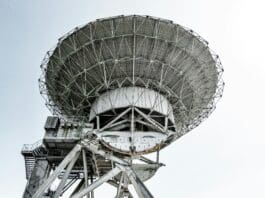This post is also available in:
 עברית (Hebrew)
עברית (Hebrew)
The domestic response to coronavirus crisis in the US is rapidly expanding, yet there are concerns that response capabilities and resources at the local and state levels could become overwhelmed in the coming days and weeks and outpace the capacities of health facilities.
The military helps in various ways. The coronavirus pandemic is only one of many potential disasters that will require unity of action among the armed services. Although at the moment, it is hard to look beyond the the coronavirus crisis, the effects of climate change — increased storminess, flooding, droughts and wildfires also pose profound and long-term threats that could cost thousands of lives.
Creating a disaster response command within the US military would provide unity of action among the services to respond to emergencies like the present one. This is the opinion of David Helvarg, executive director of Blue Frontier, an ocean conservation and policy group, elaborates in a nytimes.com op-ed.
He calls for immediate activation of such response command in order to improve strategic planning for an array of other threats, including future pandemics and climate-linked natural disasters; and position resources in advance — like ventilators and hospital beds.
Under the current system, US military coordination with civilian agencies in disaster response is done through the Pentagon’s Northern Command. Its main function is the military defense of the hemisphere, with increased emphasis on the Arctic.
In 2015, the department directed its combatant commands to integrate the potential for climate impacts into their planning cycles. The results have been mixed at best.
Designed for warfighting, the Pentagon has always been challenged in its efforts at projecting “soft power.”
The increasing challenges faced by civilian front-line organizations, not just in the public health and hospital sector but also by groups like Cal Fire, which can mobilize 10,000 firefighters in California and still be overwhelmed, suggests it’s time to at least partly redefine how the US collects on its multi-trillion-dollar, generations-long investment in national defense.
The article suggests that the Defense Department’s’ National Guard Bureau is well-positioned to help staff and direct a natural disaster response command — as is the Army Corps of Engineers, with its long history of close collaboration with civilian agencies.
The Coast Guard, with its depth of experience in search and rescue, incident command and surge response to disasters can also be part of the new array.




